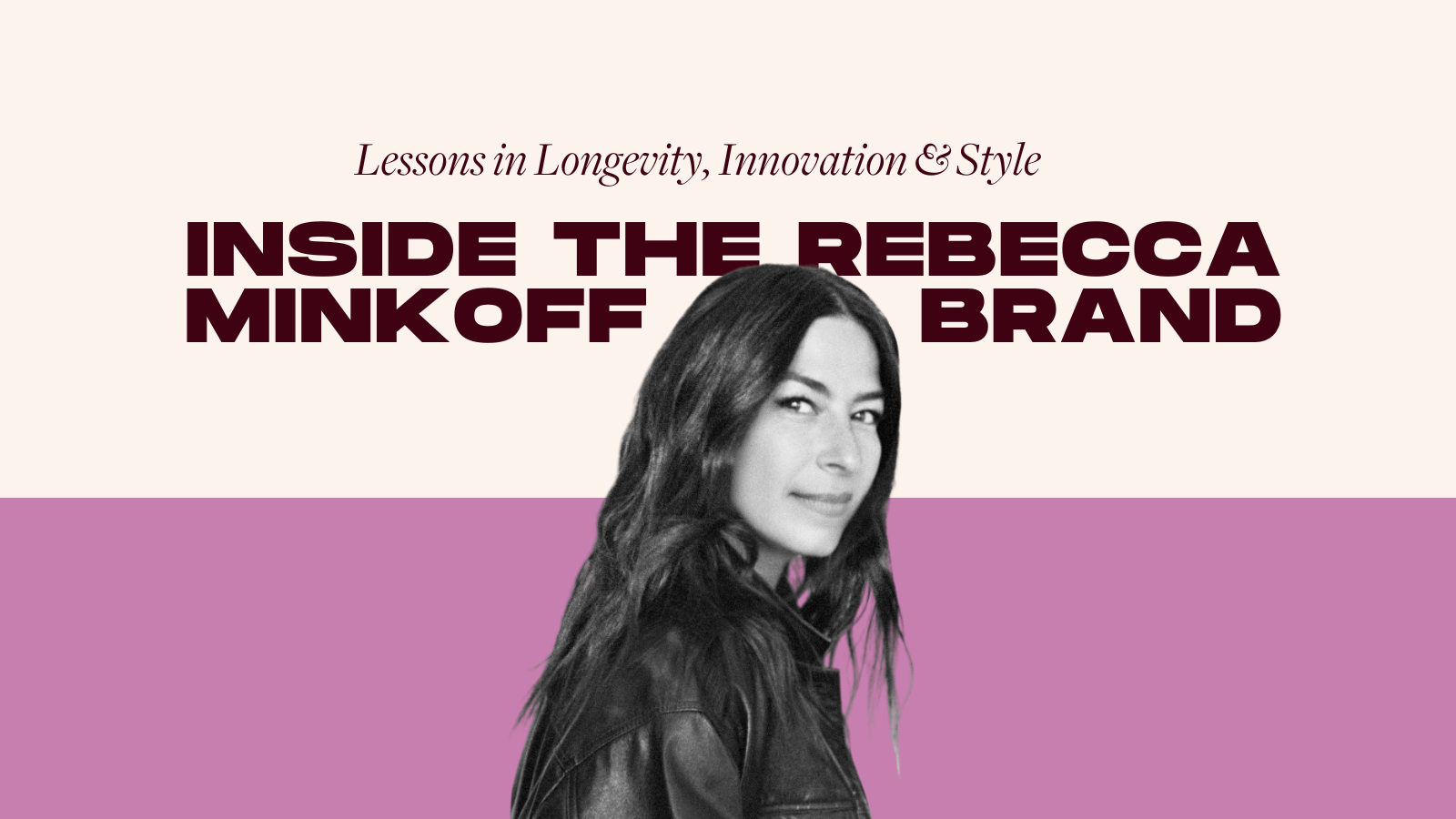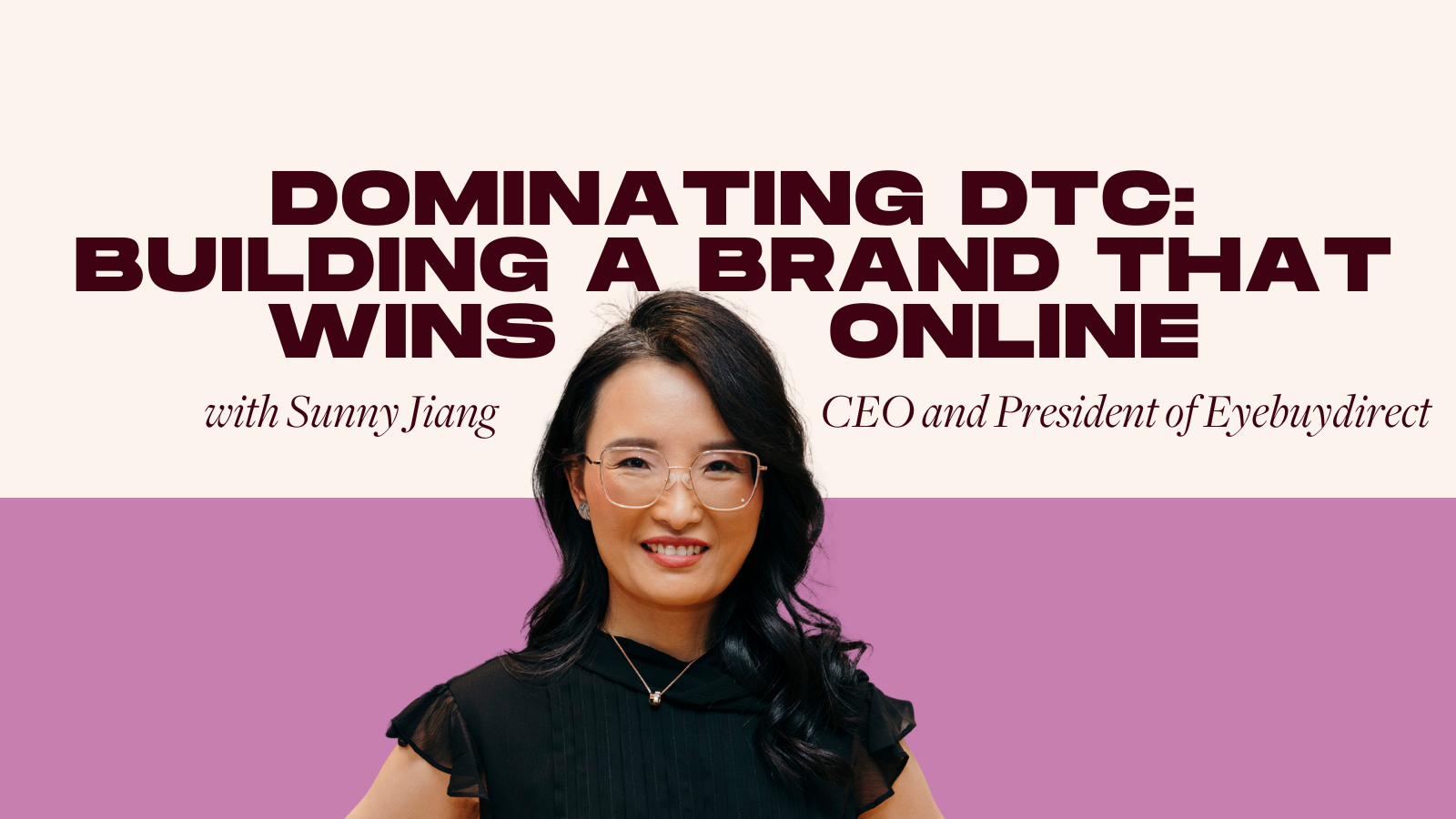
Education
Inside the Rebecca Minkoff Brand: Lessons in Longevity, Innovation & Style
At Female Founder Collective's The 10th House, we know that building a fashion brand that lasts twenty years sounds impossible in an industry obsessed with overnight success. In our exclusive two-part conversation with Rebecca Minkoff and co-founder Alison Wyatt, we pulled back the curtain on how Rebecca transformed a single handbag design into a globally recognized lifestyle brand—and what she'd do differently knowing what she knows now.
Rebecca's track record speaks for itself. From the iconic Morning After Bag that put her on the map to scaling from zero to a global fashion brand, she's navigated every retail evolution: wholesale dominance, DTC emergence, brick-and-mortar expansion, technology-driven innovation, and now a licensing-led future. Her mantra today is to "Slow the F down", because sustainable growth beats explosive momentum that burns you out.
With fashion brands failing at alarming rates and founders losing thousands on ill-timed wholesale deals or premature retail expansion, understanding how to build brand equity while preserving profitability has never been more critical for emerging designers trying to make it past year three.
Breaking Down the Strategies Behind a Global Fashion Brand Builder (From Someone Who Made Every Mistake First)
Most founders romanticize the fashion industry without understanding the brutal math behind it. Rebecca's philosophy is different: creativity matters, but infrastructure wins. In a market where margins determine survival and everyone's chasing the next collaboration, Rebecca has quietly built systems that create competitive advantages while her peers chase vanity metrics.
The journey she's navigated reveals critical lessons for every founder. What worked in 2005—move fast, leverage credit cards, say yes to everything—doesn't work in 2025. The brands winning now are the ones who built proper foundations: healthy margins, customer intimacy, omnichannel strategy that actually works, and the discipline to know when growth should slow down.
Here's what Rebecca revealed about building fashion brands that last:
-
Bootstrap with intention, not desperation—your early funding strategy shapes everything. Rebecca started by styling commercials for $1,000/day and funneling every dollar minus rent and ramen into her business. Her dad co-signed a credit card he "very much regretted later," but that credit became seed capital. When they hit $5M in revenue, they secured factoring through Rosenthal & Rosenthal—purchase order financing that advanced 70-80% of wholesale orders after credit-checking retailers. This allowed them to scale from $5M to $25M without diluting equity. The lesson? Exhaust creative funding (styling gigs, pre-orders, factoring, small business loans) before taking institutional capital. "We knew our equity was so valuable that we didn't want to dilute it," Rebecca explained. Only raise money when you have product-market fit, heat around your brand, and a crystal-clear deployment plan.
-
Margins aren't optional—they're your survival mechanism. The luxury brands pricing bags at $2,000-$20,000? They have "the healthiest margins in the universe," funding flagship stores and celebrity campaigns. Rebecca's affordable positioning ($195 for the Mini Mac) drove explosive growth but created years of stress. "We didn't have a margin for many years," she admitted. Her advice now? Build 60-75% margins into accessories, 75%+ for apparel from day one. When she priced the Mini Mac at $195, the margin was terrible—but they bet that hitting 10,000 units would bring costs down enough to hit target margins. It worked, but "it was very, very stressful." Today's founders have the advantage of learning from her mistakes: don't sacrifice profitability for growth unless you have an ironclad plan to fix it.
-
Retail partnerships can scale you or kill you—choose markets where your customer already lives. When wholesale partners came calling, Rebecca learned the hard way: never let retailers play designer. "Every time we listened to them—make this in green, put this phrase on wallets—we diluted the brand." The smartest approach? Start in markets where your e-commerce data already shows customer concentration, begin conservatively (Target starting at 200 stores before expanding to 800 over three years), and tailor your assortment by channel—wholesale sells classics, your site sells fashion. Most importantly: don't get seduced by massive orders you can't fund or that force you into markets where you have zero customer base.
-
Physical retail isn't dead, but the metrics changed—think experience centers, not transaction machines. Rebecca's $1,000 square foot pop-up with 10 SKUs outperformed her expensive flagship stores. The lesson? Smaller footprints, heat-mapped customer behavior, RFID tags tracking purchase combinations, and experiences (coffee shops, libraries, community hubs) that create attachment beyond transactions. "The sale might not happen in the store—it might happen online when she leaves," Rebecca notes. Brands like Buck Mason, Ralph's Coffee, and Coach are building consumer hubs where selling coffee matters as much as selling product because the goal is lifetime value, not transaction-day revenue.
-
Collaborations drive awareness, not always sales—set the right goals or you'll be disappointed. Rebecca's Wicked partnership sold out, but that's rare. Most collaborations exist for brand affinity and awareness, not revenue. Her Casio watch collaboration fifteen years ago funded an event she couldn't afford while Casio attached themselves to an indie brand. Her Amazon stadium bag partnership cost "small five figures" but unlocked sports partnerships that bought out remaining inventory. The framework: define if you want awareness or sales, ensure equal deliverables from both partners, and get creative about who you approach (she partnered with Morgan Stanley on bags symbolizing "women and wealth"). The scrappiest founders win here.
-
Never take institutional capital without understanding the strings attached. When Rebecca sold 26% to private equity in 2012, it seemed like relief. But PE firms have seven-year exit timelines, and drag rights in her contract meant when that term ended, they could force a sale whether she wanted one or not. Her biggest regret? Not selling more to a different partner when they had the chance, before two recessions, two tariff rounds, and almost going out of business during COVID. "I probably would have sold then," she reflects. The lesson: capital comes with board control, exit pressure, and constraints on autonomy. Only take it when you're truly ready to share the driver's seat.
-
Treat your brand pillars like religion—they're your filter for every decision. Rebecca asks: "What are your brand pillars? What do you stand for? When someone closes their eyes and hears your name, what does it mean?" For Rebecca Minkoff, it's the dog hook hardware, tassels, edgy femininity. Every product decision, collaboration, and licensing deal gets filtered through those pillars. If it doesn't check those boxes, it doesn't go into the world. This discipline prevents the brand dilution that kills most fashion companies as they chase growth.
If you’re a 10th House member, click here to watch the replay.
If you’re not a 10th House member, click here to apply today.
Your Invite to 10th House: A Community that Fuels Your Journey
At Female Founder Collective’s 10th House, we exist to democratize access to the strategies, insights, and connections that have traditionally been locked behind closed doors. Our community fosters authentic connections, celebrates victories, and shares honest advice, creating a space where founders can grow together.
As a member of The 10th House, here’s what you can unlock:
- Direct access to industry leaders who meet you where you are and give candid, real-world advice.
- Supportive workshops, resources, and frameworks you can apply the same day.
- Opportunities to connect with founders who celebrate your wins and help you through setbacks—with zero judgment, just true understanding.
- Front-row seat to future events like our intimate fireside chats, founder cohorts, and exclusive pitch demos.
Apply now below to join our vibrant community and unlock the resources, insights, and connections you need to scale your entrepreneurial journey. Let’s build the future, side by side 💌
Apply for 10th House Membership
What's Next?
Become a part of a community of like-minded female founders. Inside The 10th House, you’ll find fellow founders, investors, and above all, a community.
Filed in:

